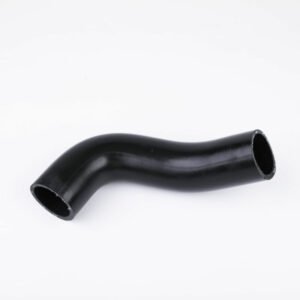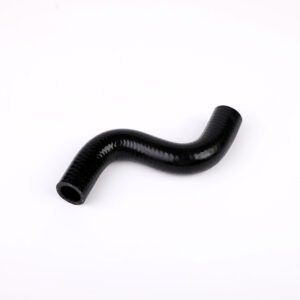Kühlerschlauch
Was ist ein Kühlerschlauch?
Der Kühlerschlauch ist der Kanal für die Kühlwasserzirkulation, Dazu gehören ein Wassereinlassschlauch und ein Wasserauslassschlauch. Zusätzlich, es ist ein großer Durchmesser Gummischlauch, der Motorkühlmittel zwischen Motor und Kühler transportiert, und kehrt dann zur Wasserpumpe zurück. Im Rahmen der routinemäßigen Wartung, Überprüfen Sie die Kühlerschläuche auf ihre Unversehrtheit. Anzeichen von Schäden oder Abnutzung erfordern eine vorbeugende Wartung, was einfacher und weniger destruktiv ist als Alternativen.
Was passiert, wenn der Schlauch bricht??
Aufgrund der hohen Temperatur des Kühlwassers, the long-used radiator hoses are prone to crack and damage. And the vibration of the engine is another reason to affect radiator hoses.
Checking the radiator hoses frequently is a good habit. Hier entlang, it may avoid the leakage of cooling water caused by cracks and damage to the radiator hose. In case of a crack or damage at the end of the radiator hose, Das Ende kann direkt abgeschnitten werden. Und dann kann der Schlauch wieder verschlossen werden. Zusätzlich, the radiator cap must be unscrewed to avoid excessive pressure on the cooling system. Wenn der Riss klein ist, Der Riss kann direkt mit Seife eingerieben werden.
Wenn der mittlere Teil des Schlauchs gerissen oder beschädigt ist, part of the cooling water must be drained first. Nachdem das gesamte Wasser am Kühlerschlauch trocken ist, use of tape or plastic paper wraps the damaged part to temporarily solve the problem. If the crack on the radiator hoses is too large, Es ist wahrscheinlich, dass nach dem Binden immer noch Wasser austritt. Zu diesem Zeitpunkt, you must open the water tank cover to reduce the pressure in the water channel and the leakage of cooling water.
Characteristics Radiator Hose
Materialzusammensetzung:
Typically made from tough materials like EPDM rubber, Silikon, or reinforced rubber, which give it strength, Flexibilität, and resistance to the elements.
High Heat Resistance:
Designed to withstand high temperatures, often between -40°C to 150°C (-40°F to 302°F), ensuring they perform well under the heat generated by the engine.
Pressure Tolerance:
Radiator hoses are designed to withstand the pressure inside the cooling system, which typically ranges from 1 Zu 3 Bar (14.5 Zu 43.5 psi), without bursting or collapsing.
Flexibility and Shape:
They’re flexible enough to fit into tight engine compartments and can be molded into complex shapes to fit different vehicle designs.
Verstärkung:
A lot of radiator hoses are strengthened with fibers or something else to make them stronger and tougher, so they don’t kink and keep their shape when they get pressure.
Aging and Ozone Resistance:
Radiator hoses are made from materials that resist aging and ozone, which helps prevent cracking and extends the life of the hose.
Low Permeability:
Designed to minimize gas and liquid permeability, which reduces the risk of leaks and keeps coolant flowing efficiently.
Anpassung:
Available in different sizes, Längen, and configurations to meet your specific needs, with options for straight or molded designs depending on how you want to use them.
Alle anzeigen 4 Ergebnisse



